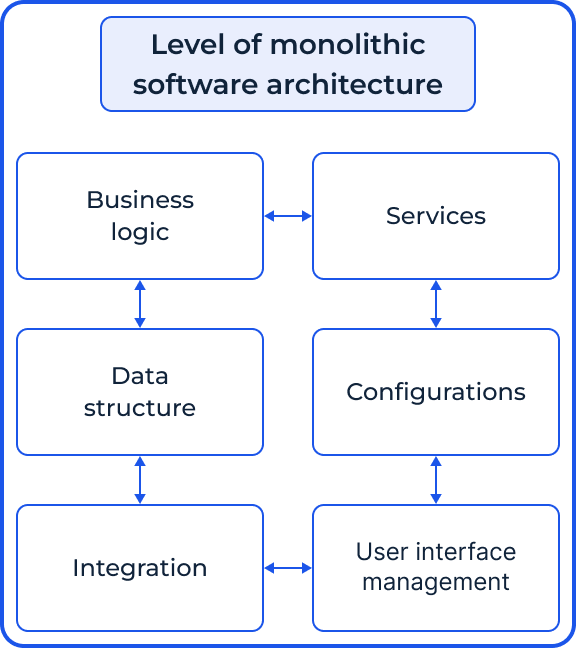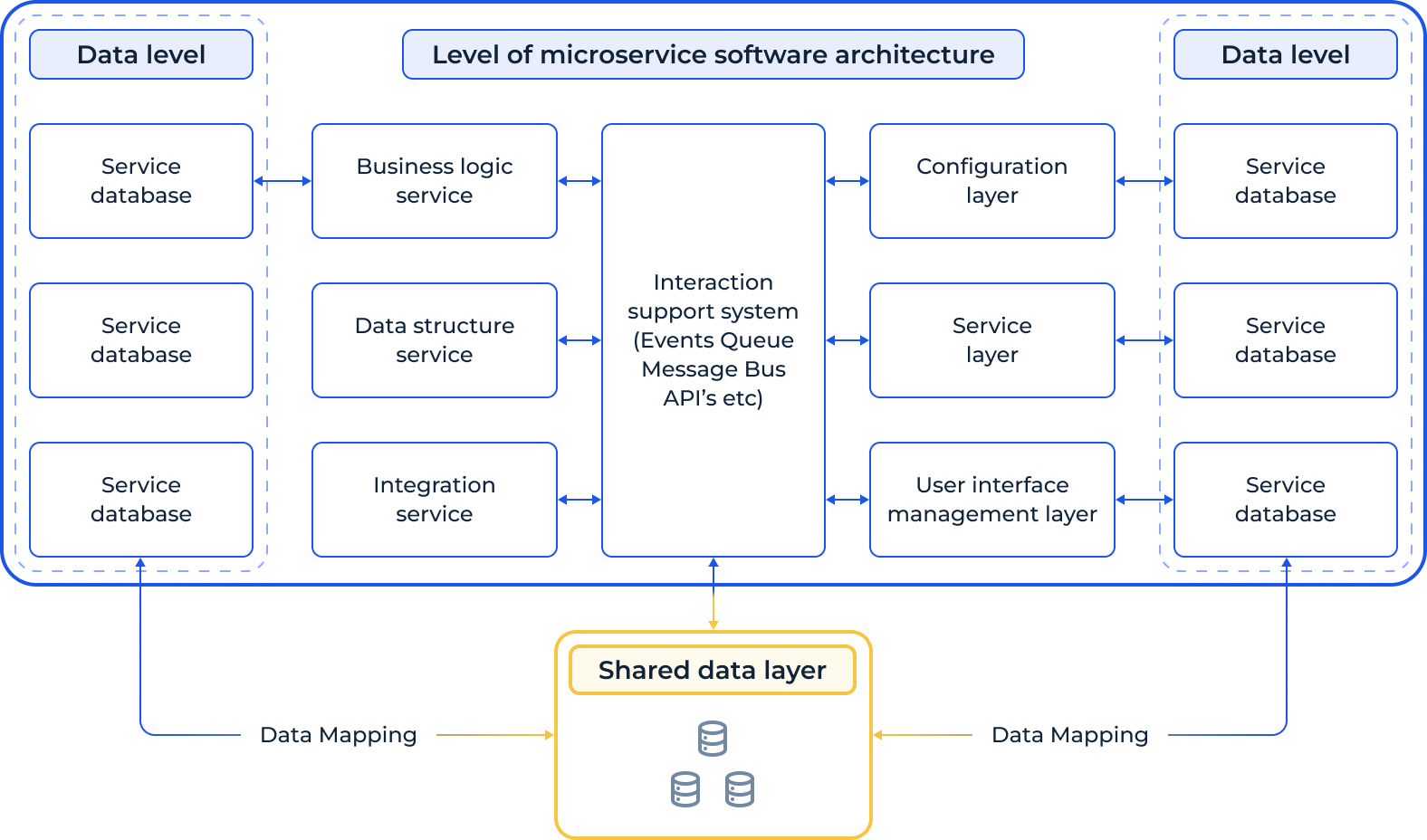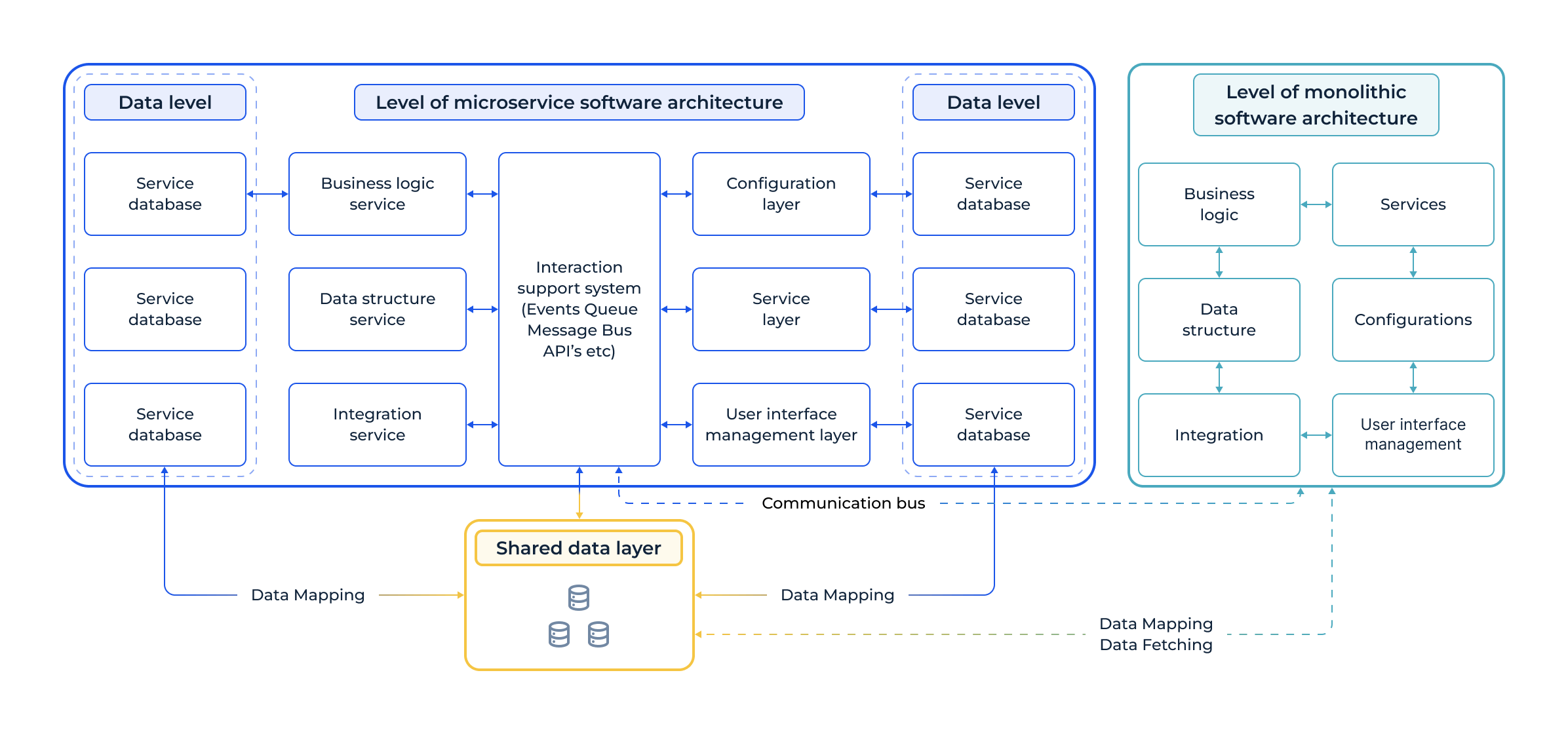Why SDK.finance uses modular architecture instead of microservices?
Our decision to adopt a modular architecture is driven by the need to provide a flexible, scalable, and cost-effective platform. This approach allows for independent updates, tailored solutions, enhanced security, and efficient integration capabilities, making it a superior choice for their financial technology solutions compared to traditional monolithic and microservices architectures.
By leveraging a modular architecture, we can meet the diverse needs of our clients while maintaining a robust, secure, and adaptable system. This strategy ensures we remain competitive and capable of responding to the rapidly evolving demands of the financial technology sector.
Here’s a detailed breakdown of why this choice is advantageous:
1. Flexibility and customization
Tailored solutions: Modular architecture allows clients to select only the necessary modules, reducing complexity and facilitating straightforward implementation.
Independent updates: Modules can be independently updated or replaced, enabling the introduction of new features or fixes without disrupting the entire system. This flexibility is crucial for adapting to specific business requirements swiftly.
2. Scalability
Controlled scaling: Each module can be scaled independently based on usage patterns and demand. This is particularly beneficial in handling varying loads across different services.
Optimized performance: By focusing on scaling specific modules rather than the entire system, SDK.finance can optimize performance and resource allocation more effectively.
3. Cost efficiency
Reduced costs: Clients pay only for the specific modules they use, lowering the overall cost of ownership. This model is especially advantageous for startups and smaller businesses with limited budgets.
Economies of scale: As transaction volumes increase, the per-transaction cost decreases, making it economically viable to scale services without a proportional increase in costs.
4. Simplified maintenance and development
Easier maintenance: Isolated modules mean issues in one do not affect the entire system, simplifying debugging and maintenance.
Faster development cycles: Developers can work on different modules simultaneously, speeding up the development cycle and allowing for quicker delivery of new features.
5. Enhanced security
Data isolation: Sensitive data can be categorized within specific modules, reducing the risk of widespread data breaches.
Regulatory compliance: Each module can be designed to meet specific regulatory requirements, ensuring the overall system remains compliant with various international standards.
6. Integration capabilities
Seamless integrations: Individual modules can integrate with external systems without requiring changes to the core platform.
Custom integrations: Clients can choose the integrations they need, and SDK.finance can develop or support these integrations as separate modules, ensuring seamless compatibility and functionality.
Comparisons with other architectures
Monolithic architecture
Monolithic architecture, the traditional model for designing software, operates as a single, standalone module integrating all business tasks. It simplifies deployment, development, performance, and debugging but presents challenges in development speed, scalability, reliability, flexibility, and deployment.

Advantages
- Simple deployment: Using a single executable file or directory simplifies deployment.
- Easier development: The application is easier to develop with a single codebase.
- Performance: A single API interface can perform functions that would require multiple APIs in microservices.
- Simplified testing: End-to-end testing is faster than with distributed applications.
- Convenient debugging: All code is in one place, simplifying problem location.
Disadvantages
- Reduced development speed: A large monolithic application complicates and slows down development.
- Scalability: It’s impossible to scale individual components.
- Reliability: A failure in one module can affect the entire application.
- Technological barriers: Infrastructure or programming language changes affect the entire application, leading to increased costs and time expenditures.
- Lack of flexibility: Monolithic applications are limited by the technologies used.
- Deployment: A small change requires redeployment of the entire application.
Microservices architecture
Microservices architecture organizes software into independently deployable services with their business logic and databases. It addresses issues faced by growing companies, providing flexibility, scalability, continuous deployment, ease of maintenance, independent deployment, technological flexibility, high reliability, and satisfied teams.

Advantages
- Flexibility: Supports flexible working methods among small teams.
- Scalability: New instances of a service can be quickly deployed to handle peak loads.
- Ease of maintenance and testing: Errors and bugs are easier to find and fix within individual services.
- Independent deployment: Services can be deployed independently.
- Technological flexibility: Teams can choose tools according to their preferences.
- High reliability: Changes to a specific service do not risk the entire system’s stability.
Disadvantages
- Development process growth: Complicates work as more services emerge.
- Infrastructure costs: Each microservice may have its own cost for test suites, deployment instructions, hosting infrastructure, and monitoring tools.
- Organizational costs: Additional communication and collaboration are needed to coordinate updates and interfaces.
- Debugging issues: Each microservice has its own logs, complicating debugging.
- Lack of standardization: The list of languages, logging standards, and monitoring tools can expand.
- Unclear ownership: As more services emerge, it becomes harder to determine which team is responsible for each service.
Hybrid architecture
A hybrid approach combines monolithic and microservices architectures, balancing their advantages and disadvantages. It offers scalability, flexibility, stability, reusability, parallel development, cloud-native deployment, and enhanced security but involves complexities in management, integration, and potential latency issues.
 Benefits
Benefits
- Scalability: Microservices can be scaled independently, ensuring better performance and resource utilization.
- Flexibility: Faster development cycles and independent deployment and scaling for microservices.
- Stability: The monolithic part ensures stability and consistency for core functionality.
- Reusability: Services can be reused in different parts of the application.
- Parallel development: Multiple teams can work simultaneously on different parts of the system.
- Cloud-native: Supports deployment across various cloud providers using cloud-native technologies like Kubernetes and Docker.
- Enhanced security: Each service can be secured independently.
Challenges
- Complexity: Managing and maintaining both architectures can be more complex.
- Integration: Requires careful planning for integrating monolithic and microservices parts.
- Latency: Communication between services can introduce latency.
- Deployment and management: Each service needs to be deployed and managed independently.
- Security: More potential points of failure require independent security measures.
So, all in all, we opt for a modular architecture over microservices due to its superior alignment with our goals of flexibility, scalability, and cost-efficiency, crucial for financial technology solutions.